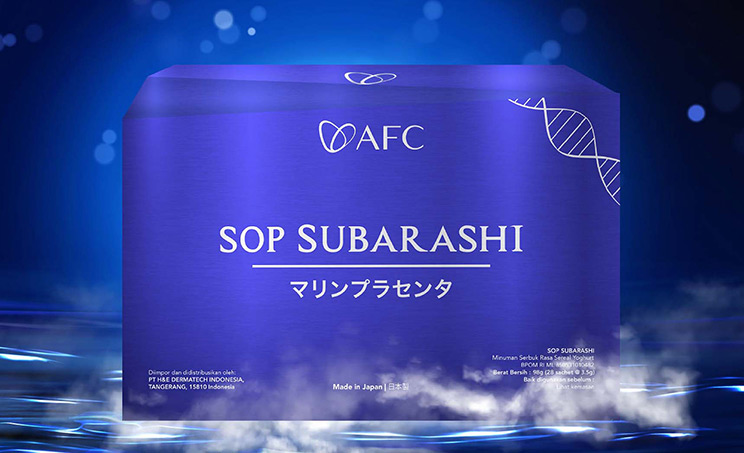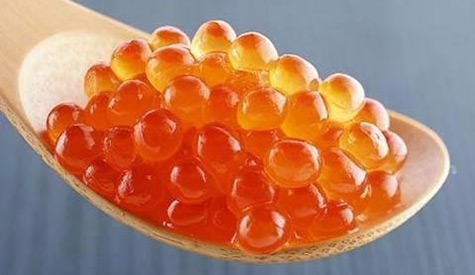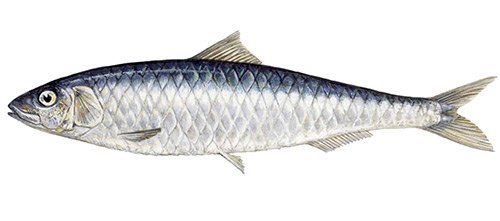
In today’s fast-paced world, maintaining our health has become more critical than ever. With countless products on the market, it can be challenging to know which ones genuinely make a difference.
Enter AFC SOP SUBARASHI, a groundbreaking product that has been carefully crafted to enhance your overall well-being.
In this comprehensive guide, we’ll explore the unique benefits of AFC SOP SUBARASHI and how it can revolutionize your health and wellness journey.
What is AFC SOP SUBARASHI?
AFC SOP SUBARASHI is a revolutionary health supplement developed by AFC, a leading provider of cutting-edge health and wellness products.
The name “SUBARASHI” is derived from the Japanese word “素晴らしい,” which means “wonderful” or “amazing.”
True to its name, this incredible product harnesses the power of science and nature to offer unparalleled health benefits.
The Science Behind AFC SOP SUBARASHI
AFC Japan has invested years of research and development into creating the perfect formula for AFC SOP SUBARASHI.
By combining high-quality, natural ingredients with cutting-edge scientific research, AFC has crafted a product that effectively addresses multiple health concerns. Some key ingredients include:
1. Japanese Marine Placenta

Japanese marine placenta, also known as “marine placenta” or “marine collagen placenta,” is a type of dietary supplement derived from the placenta of deep-sea fish, such as salmon or cod.
The placenta is a nutrient-rich organ that provides essential nourishment to the developing fetus during pregnancy. In supplements, it is believed that the placenta’s high nutrient content can provide a range of health benefits, including:
Anti-aging effects
Japanese marine placenta is believed to stimulate the production of collagen, a protein that helps to keep the skin firm and elastic, and to reduce the appearance of fine lines and wrinkles.
Skin whitening
Some studies suggest that Japanese marine placenta may help to lighten and brighten the skin, reducing the appearance of age spots and other forms of hyperpigmentation.
Immune system support
Japanese marine placenta is rich in antioxidants, which help to neutralize harmful free radicals in the body and support the immune system.
Joint health
Some studies have suggested that Japanese marine placenta may help to reduce joint pain and inflammation, potentially making it a useful supplement for those with arthritis or other inflammatory joint conditions.
Overall health and wellbeing
Japanese marine placenta is believed to support overall health and wellbeing by providing a range of essential nutrients, including amino acids, vitamins, and minerals.
2. Sardine Peptides

Sardine peptides are bioactive compounds extracted from sardines, which are a type of small oily fish that are widely consumed around the world.
Sardine peptides are short chains of amino acids that have been found to have a range of potential health benefits.
Research suggests that sardine peptides may have the following health benefits:
Blood pressure regulation
Sardine peptides have been found to have antihypertensive effects, which means they may help to lower high blood pressure.
This is thought to be due to their ability to inhibit the activity of an enzyme called angiotensin-converting enzyme (ACE), which plays a role in regulating blood pressure.
Cardiovascular health
Sardine peptides have also been found to have potential benefits for cardiovascular health, such as reducing the risk of heart disease and improving lipid metabolism.
Some studies have suggested that sardine peptides may help to lower levels of “bad” cholesterol (LDL) and triglycerides in the blood.
Anti-inflammatory effects
Sardine peptides have been found to have anti-inflammatory properties, which may help to reduce inflammation in the body and associated symptoms, such as pain and swelling.
This may make them useful in the management of inflammatory conditions such as arthritis and inflammatory bowel disease.
Anti-cancer properties
Some studies have suggested that sardine peptides may have anti-cancer properties, potentially due to their ability to inhibit the growth and proliferation of cancer cells.
Digestive health
Sardine peptides may also have benefits for digestive health, such as improving the balance of gut bacteria and reducing the risk of certain gastrointestinal disorders.
Overall, research suggests that sardine peptides have a range of potential health benefits, although more studies are needed to fully understand their effects and mechanisms of action.
3. Fruit Flow

Fruitflow is a natural antiplatelet ingredient derived from tomatoes. It is a water-soluble extract that contains a range of bioactive compounds, including flavonoids and carotenoids, which have been found to have potential health benefits.
Research suggests that fruitflow may have the following health benefits:
Blood pressure regulation
Fruitflow has been found to have antihypertensive effects, which means it may help to lower high blood pressure.
This is thought to be due to its ability to reduce platelet aggregation, or the clumping together of blood platelets, which can contribute to the formation of blood clots and increase the risk of heart disease.
Cardiovascular health
Fruitflow has also been found to have potential benefits for cardiovascular health, such as reducing the risk of heart disease and stroke.
Some studies have suggested that fruitflow may help to improve blood flow and circulation, as well as reduce levels of “bad” cholesterol (LDL) in the blood.
Anti-inflammatory effects
Fruitflow has been found to have anti-inflammatory properties, which may help to reduce inflammation in the body and associated symptoms, such as pain and swelling.
This may make it useful in the management of inflammatory conditions such as arthritis and inflammatory bowel disease.
Sports performance
Some studies have suggested that fruitflow may help to improve sports performance by reducing the risk of exercise-induced blood clots and improving blood flow to the muscles.
The Health Benefits of Taking AFC SOP SUBARASHI
AFC SOP SUBARASHI offers a wide range of health benefits, making it a truly versatile and powerful supplement. Some of the key benefits include:
Enhanced Immune System Function
The potent antioxidants and immune-boosting ingredients in AFC SOP SUBARASHI work together to support a healthy immune system.
By reducing oxidative stress and inflammation, this product helps your body to fight off infections and diseases more effectively.
Improved Energy Levels
AFC SOP SUBARASHI contains ingredients like Fruit Flow and Marine Placenta, which are known to boost energy levels and enhance endurance.
By providing your body with the necessary nutrients for optimal energy production, this supplement can help you feel more energetic and capable throughout the day.
Anti-Aging Benefits
With powerful antioxidants like Fruit Flow, AFC SOP SUBARASHI helps to combat the signs of aging by neutralizing free radicals and reducing oxidative stress.
This can lead to healthier, more youthful-looking skin, improved cognitive function, and a reduced risk of age-related diseases.
Cardiovascular Health
The ingredients in AFC SOP SUBARASHI have been shown to support cardiovascular health by promoting healthy blood flow, reducing inflammation, and protecting blood vessels from oxidative damage.
Fruit Flow, in particular, has been linked to improved heart health by maintaining healthy cholesterol levels and supporting blood vessel function.
Enhanced Cognitive Function
The powerful antioxidants and nutrients in AFC SOP SUBARASHI help to protect brain cells from damage, promote healthy brain function, and reduce inflammation in the brain. This can lead to improved memory, focus, and overall cognitive performance.
Supports Healthy Weight Management
By promoting healthy metabolism and providing essential nutrients, AFC SOP SUBARASHI can help support your weight management goals.
The natural ingredients in this product have been shown to aid in fat burning and appetite control, making it easier for you to maintain a healthy weight.
Detoxification
AFC SOP SUBARASHI contains ingredients that support the body’s natural detoxification processes. By eliminating toxins and reducing oxidative stress, this product can help to improve overall health and promote a feeling of rejuvenation.
How to Incorporate AFC SOP SUBARASHI into Your Daily Routine
AFC SOP SUBARASHI is designed for easy integration into your daily routine. Here are some tips on how to get the most out of this powerful supplement:
- Consistency is Key: To fully experience the benefits of AFC SOP SUBARASHI, it is essential to take the supplement consistently. Follow the recommended dosage instructions on the packaging, and make it a part of your daily health routine.
- Combine with a Healthy Diet: While AFC SOP SUBARASHI can provide numerous health benefits, it is not a replacement for a balanced diet. Make sure to consume a variety of nutrient-rich foods, including fruits, vegetables, lean proteins, and healthy fats, to support your overall well-being.
- Stay Hydrated: Drinking enough water is vital for maintaining overall health, and it can also help your body to better absorb the nutrients in AFC SOP SUBARASHI. Aim for at least eight glasses of water per day to stay properly hydrated.
- Exercise Regularly: Combining AFC SOP SUBARASHI with regular physical activity can help to enhance its benefits. Aim for at least 30 minutes of moderate exercise most days of the week to support your overall health and wellness goals.
Safety and Precautions
AFC SOP SUBARASHI is made from high-quality, natural ingredients, making it safe for most individuals to use. However, it is essential to consider the following precautions:
Consult Your Healthcare Provider
If you have any pre-existing medical conditions or are taking medications, it is important to consult with your healthcare provider before starting AFC SOP SUBARASHI. They can help you determine if this product is suitable for your specific needs.
Allergies and Sensitivities
If you have a known allergy or sensitivity to any of the ingredients in AFC SOP SUBARASHI, avoid using this product. Always read the ingredient list thoroughly to ensure that it is safe for your consumption.
Pregnant or Nursing
If you are pregnant or nursing, consult with your healthcare provider before using AFC SOP SUBARASHI, as the safety of this product for pregnant or nursing women has not been fully established.
Conclusion
AFC SOP SUBARASHI is a groundbreaking health supplement that offers a wide range of benefits for overall health and wellness.
With its unique blend of powerful antioxidants, immune-boosting ingredients, and essential nutrients, this product can help you to feel more energetic, focused, and vibrant.
By incorporating AFC SOP SUBARASHI into your daily routine and following a healthy lifestyle, you can take a significant step towards achieving optimal health and well-being.





